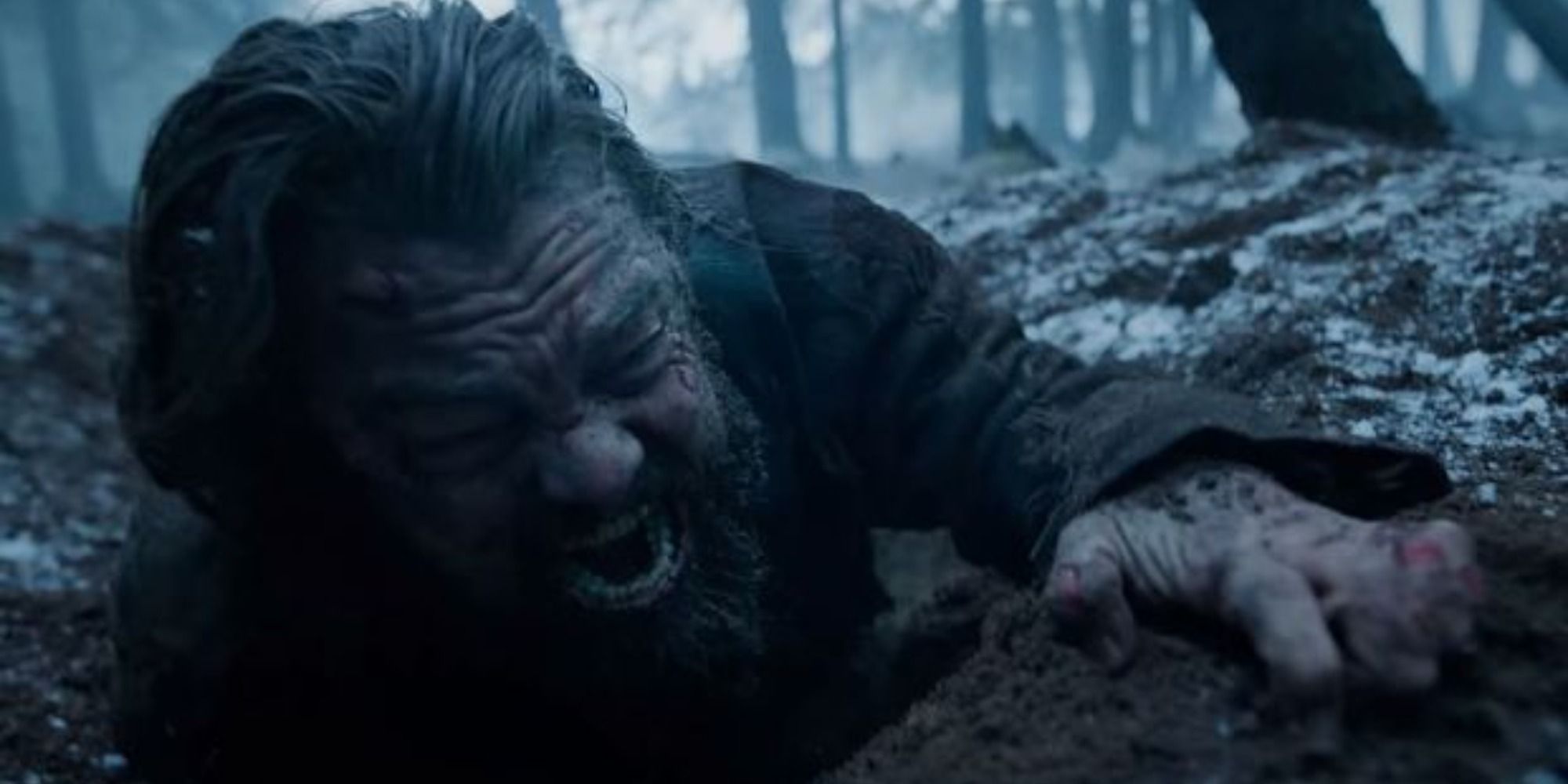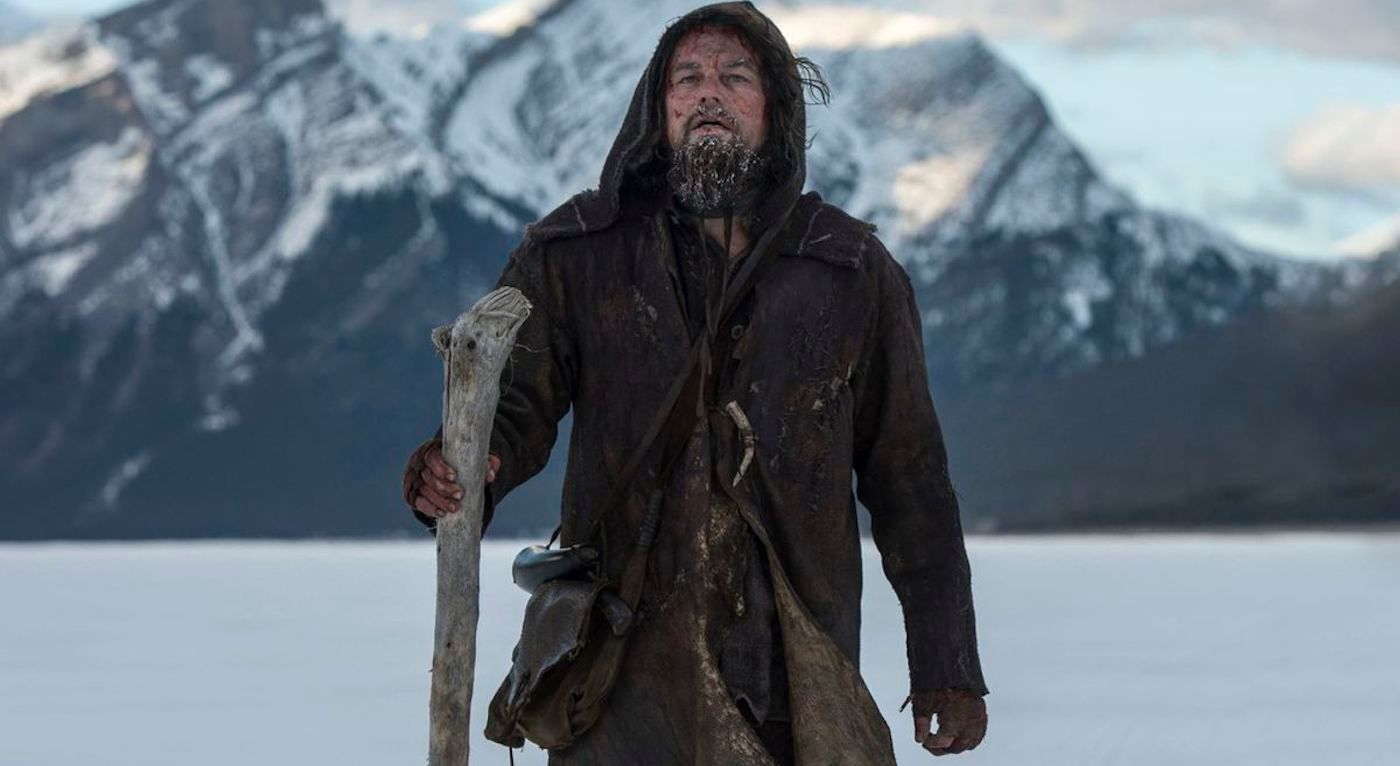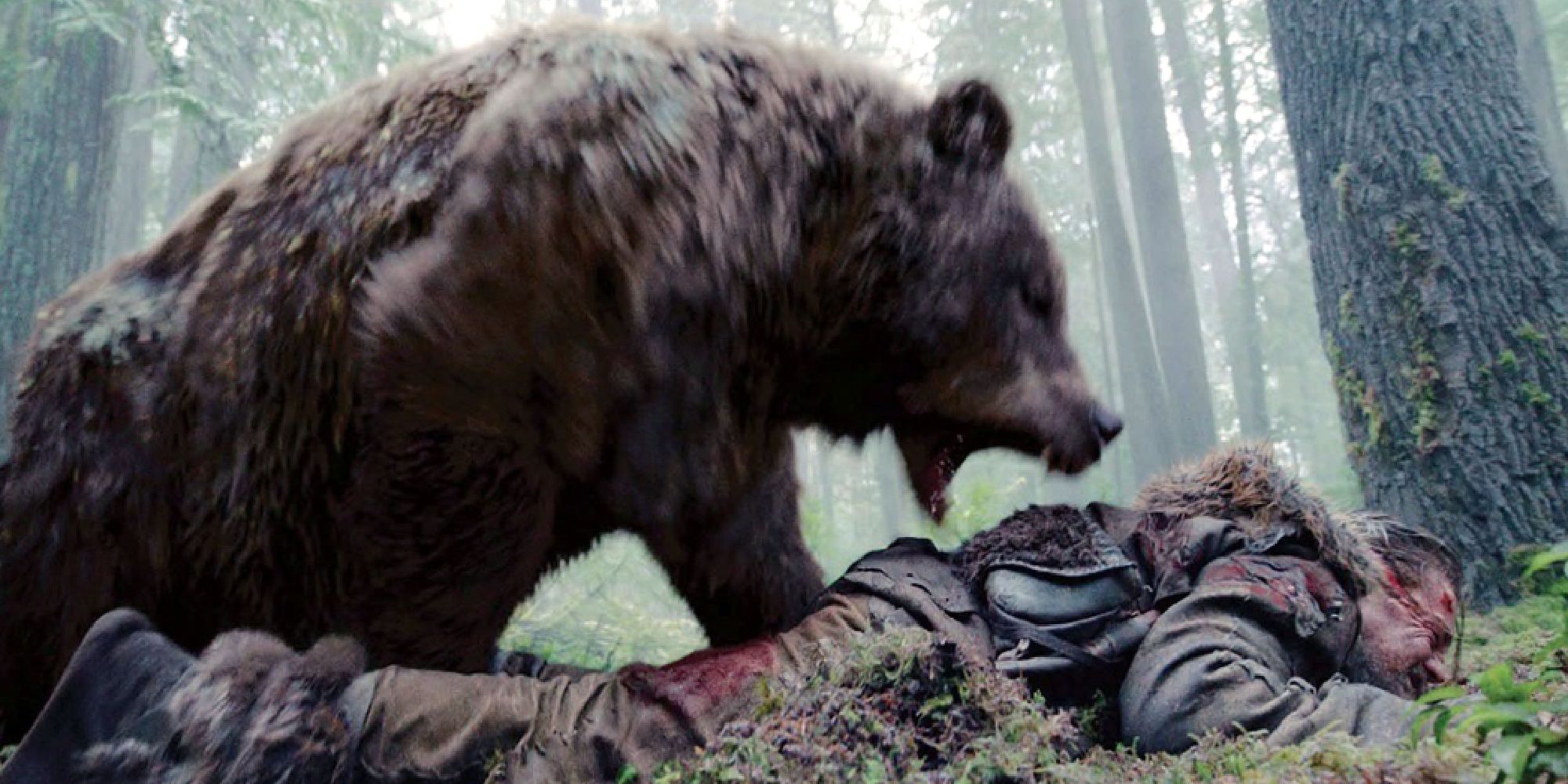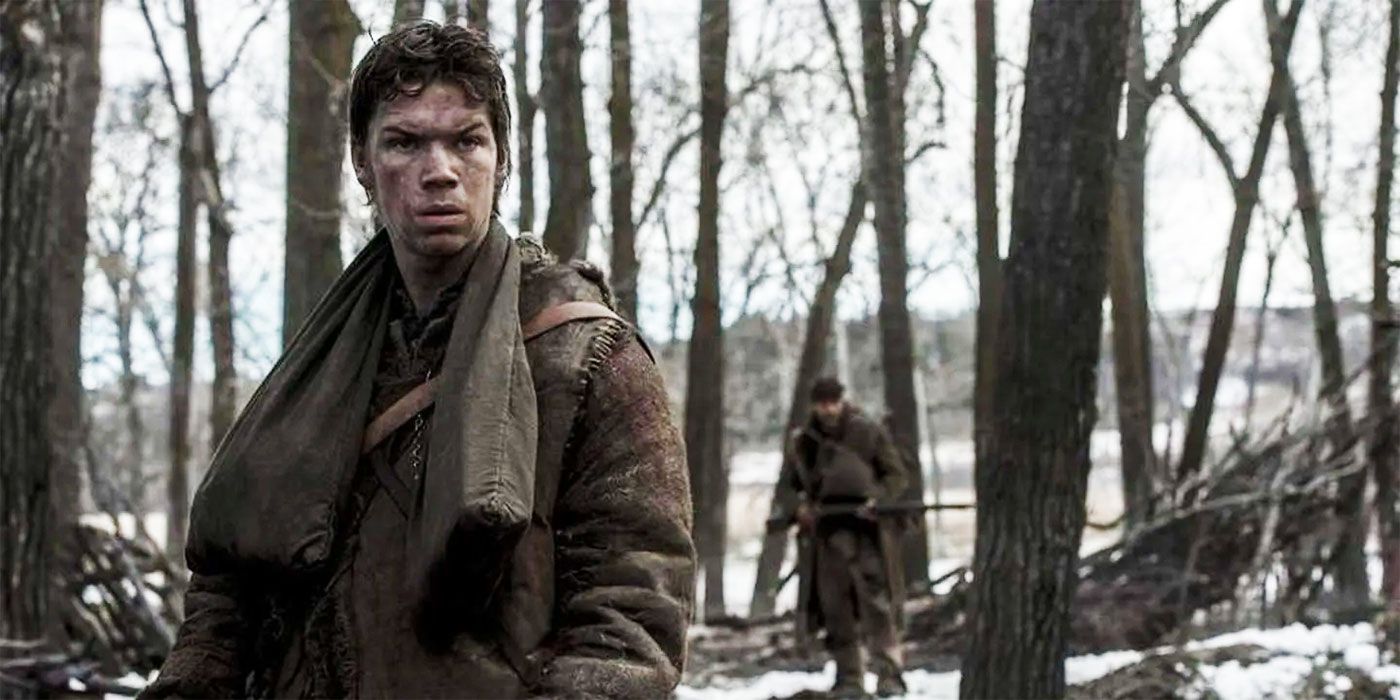One of the most beautifully shot films of the 21st century, The Revenant is perhaps most notable because it was the film that finally won Leonardo DiCaprio his well-deserved Oscar for Best Actor.
Of course, this Alejandro G. Iñárritu-directed Western thriller is so much more than that. Based on the real-life story of fur trapper Hugh Glass, The Revenant chronicles the frontiersman’s journey across the snow-covered Dakotas after being mauled by a bear. The film itself is brutal and unwavering in its portrayal of the harshness of frontier living. Yet, the real story is even more intense than what we only saw simulated on the screen. Here’s what really happened to Hugh Glass all those years ago…
Hugh Glass Was a Mountain Man Through and Through
There’s a lot we don’t know about Hugh Glass, but there’s also a lot we do. The man’s infamous grizzly encounter was first described in an 1825 publication called The Port Folio under the title “Letters from the West, No. XIV., The Missouri Trapper.” The events of his life before that day wouldn’t be described in detail until George C. Yount’s account was published in 1925, called “The Adventures of Hugh Glass.” From what we can tell, Hugh Glass was everything from a sailor to a pirate to an adopted member of the Wolf Pawnee tribe. As explored in The Revenant, he may have even taken a Pawnee woman as his wife. According to some stories, Glass killed a grizzly during his time with the Pawnee and was awarded the name “Ta-Ka-Kur’uks” (which translates to White Bear or Grizzly) for his triumph, though it’s unclear if this is history or legend. Nevertheless, the fact remains that Glass lived with the Pawnee people for a considerable amount of time. But all that changed when an advertisement for “Enterprising Young Men” appeared in the Missouri Gazette & Public Advertiser and other Midwestern newspapers in 1822.
General William Henry Ashley was looking for men to travel west with him via the Missouri River, and evidently, Glass was interested. By the summer of 1823, he had joined a fur-trapping expedition. Despite being over 40 years of age, Glass — known by his nickname “Old Hugh” — was a valued member of “Ashley’s Hundred” (a group later known as the Rocky Mountain Fur Company). Others in the group included Andrew Henry, Jedediah Smith, Jim Beckwourth, Jim Bridger, and John S. Fitzgerald. While on their journey, the group was attacked by a band of Arikara Indians after Ashley first traded with them (as portrayed in the opening of The Revenant). “We traded with them as friends,” Glass wrote in a letter when informing the parents of John Gardiner that their son had been killed. “But after great storm of rain and thunder they came at us before light and many were hurt. I myself was shot in the leg.”
While The Revenant features Glass’ son Hawk (Forrest Goodluck) as a member of the expedition (his death being and the primary reason for his course for revenge), no such son actually existed. We noted that some believe Glass was married to a Pawnee woman, but we don’t know if he had any children. If he did, they certainly wouldn’t be the age Hawk is in the film since he was only with the Pawnee for a few years. Following the Arikara attack, it wasn’t long before Glass encountered the infamous grizzly bear that nearly killed him. Deeming the Missouri no longer safe, the Museum of the Mountain Man (based in Pinedale, Wyoming) notes that the party split in two, with one group headed west following the White & Cheyenne Rivers, and the other, led by Andrew Henry, traveling northwest toward Fort Henry.
‘The Revenant’ Only Touched on Hugh Glass’ Perilous Grizzly Attack — and His Trek Through the Wild Frontier

“He was quite a character,” said Jay Buckley, a Brigham Young University professor, when asked about the event. “We don’t know a ton about that era, but we wouldn’t know anything about Hugh Glass if he hadn’t been attacked by a bear.” No doubt, it’s the bear story that made Glass famous, and directly inspired both The Revenant and the 1971 motion picture Man in the Wilderness. Sometime in either August or September 1823, Glass was hunting in the forest while the other men continued on. There he stumbled upon a bear and her two cubs. Unable to do much about it, Glass was brutally mauled by the bear, but not before first getting a shot off. The mountaineer hacked at the beast with his hunting knife, but he was no match for the animal. “The set of contact had been two blows, inflicting ghastly wounds,” George Cooke noted in The Southern Literary Messenger, one of the oldest sources of the tale published in 1830. “The claws literally baring of flesh the bones of the shoulder and thigh.”
“By the time Glass’s comrades came to his aid, the animal had slashed his face to the bone, and opened long, gaping wounds on his arms, legs, and torso,” explained Ron Soodalter of American Cowboy. “The trappers fired several balls into the creature, finally bringing it down beside the inert Glass.” Somehow, with gashes on his face, his throat, and all over his body, the man survived the night, and for two days the party carried him through dangerous territory. Eventually, they couldn’t risk it anymore, and Andrew Henry offered two men an $80 bonus to stay with Glass until he died and give him a Christian burial. John S. Fitzgerald (Tom Hardy in the film) accepted the offer, as did a younger man who was later identified as Jim Bridger (though there’s some debate about that as Bridger is either unnamed or called “Bridges” in many early accounts), and the men stuck around for five days until Fitzgerald convinced his companion to leave Glass behind.
Fitzgerald and Bridger took Glass’ weapons before leaving the man to die, yet, Glass did the exact opposite. Through sheer force of will, the man crawled his way back to the nearest camp, Fort Kiowa, covering over 200 miles across South Dakota until he arrived there. He survived on low-hanging berries, roots, and any meat he could find dead on the ground as he scuffled his way toward salvation. Some suggest he even ate snakes that crossed his path, and Cooke notes that one day he happened upon a pack of wolves who killed a buffalo, waiting until nightfall to gather some leftover meat for himself once they’d gone. Cooke also recounted Glass’s encounter with a band of Sioux Indians who helped him disinfect a wound that was covered in worms. It took Glass about six weeks to make it to Fort Kiowa.
Unlike in ‘The Revenant,’ the Real Hugh Glass Forsook His Revenge
 By the time he got to Fort Kiowa, Hugh Glass had done the impossible. It was a miracle the man had survived, and with revenge fueling every breath, he joined Antione “Langevin” Citoleux and his small crew as they hoped to escape the Arikara territory and head to Fort Henry, which rested near the mouth of the Yellowstone River. Buying new weapons and ammunition, Glass went on with Langevin’s group and was eventually disappointed to find out that Henry’s fort was abandoned in favor of a new one near the Big Horn River. According to Yount’s account, Glass arrived at the new Fort Henry on New Year’s Eve, only to find that Fitzgerald was long gone. Bridger (played by Will Poulter in The Revenant), however, was still there, and it wasn’t long before he confronted the young man.
By the time he got to Fort Kiowa, Hugh Glass had done the impossible. It was a miracle the man had survived, and with revenge fueling every breath, he joined Antione “Langevin” Citoleux and his small crew as they hoped to escape the Arikara territory and head to Fort Henry, which rested near the mouth of the Yellowstone River. Buying new weapons and ammunition, Glass went on with Langevin’s group and was eventually disappointed to find out that Henry’s fort was abandoned in favor of a new one near the Big Horn River. According to Yount’s account, Glass arrived at the new Fort Henry on New Year’s Eve, only to find that Fitzgerald was long gone. Bridger (played by Will Poulter in The Revenant), however, was still there, and it wasn’t long before he confronted the young man.
Based on Cooke’s 1830 account, Glass figured that Bridger didn’t have as much say in the matter, understanding that Fitzgerald pressured the lad into leaving him behind. “That curse shall be forgiven,” Cooke notes, though it’s unclear if Glass actually uttered those words himself. “I swore an oath that I would be revenged on you, and the wretch who was with you,” Glass reportedly told the young man. “But I cannot take your life; I see you repent; you have nothing to fear from me; go––you are free;––for your youth I forgive you.” Bridger went on to become one of the biggest mountaineers in the wild frontier, and the Bridger Mountain Range in Gallatin County, Montana (bordering Bozeman) would go on to be named after him.
But Fitzgerald was still out there. The following June, Glass finally caught up to the man who left him in the wilderness to die and took his rifle as a prize. Discovering that the man had retreated to Fort Atkinson, Glass arrived hoping to enact his revenge but was unable to on account that Fitzgerald had joined the U.S. Army and was, therefore, a government employee free from Glass’ reach. No, that end fight between Leonardo DiCaprio and Tom Hardy didn’t happen in real life. The actual Glass was enraged, unable to take his revenge, but he told his story to Fitzgerald’s superiors, who graciously returned Glass his gun. Glass was satisfied with that, though disappointed he couldn’t use the said rifle on his enemy. The frontiersman continued as a fur trapper for nearly another decade before he was killed on the job by a band of Arikara Indians in 1833, thus ending the legend of Hugh Glass.
Hugh Glass’ Tale Became Mythologized, Leading to ‘The Revenant’

While some swear by the earliest accounts of Hugh Glass’ mountainous adventures, not everyone is convinced that they accurately represent the reality of the mountain man. “I don’t know if they were that worried about the distinction between fact and fiction back then,” noted Notre Dame University professor Jon T Coleman, who is somewhat skeptical of the tale. “I think it was a great story and it cohered with an American vision of the West. Through this encounter with wild nature, men’s bodies were changed and became something else. They were no longer European or British – they were American.” It’s no wonder that Glass’ story has been retold again and again, on film, television, and other visual mediums as well.

In 1915, “The Song of Hugh Glass” by John G. Neihardt was the first to mythologize Glass’ grizzly encounter, though it wasn’t the last. Frederick Manfred’s 1954 biographical novel Lord Grizzly expanded on the tale, ultimately acting as the precursor to Michael Punke’s 2002 novel The Revenant: A Story of Revenge, which served as the literary basis for the impressive Leonardo DiCaprio film. Actor John Alderson played the part of Glass in the 1966 Death Valley Days episode “Hugh Glass Meets the Bear,” and even the song “Six Weeks” by the indie folk/rock group Of Monsters and Men is about the tale. Most recently, the 2024 INSP series The Tall Tales of Jim Bridger recounts the events of Glass’ mauling and abandoning from the perspective of Jim Bridger (played by Rib Hillis) in the episode “Shards of Glass.” Of course, The Revenant is by far the most famous adaptation of these events and masterfully perpetuates the mythic tale of Hugh Glass today. It may be a phenomenal film, but it’s not the most historically accurate.



